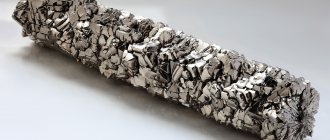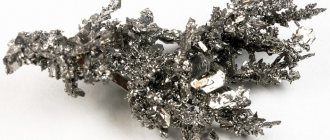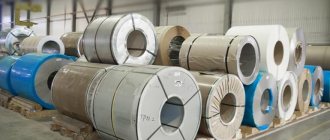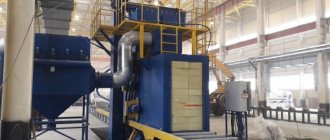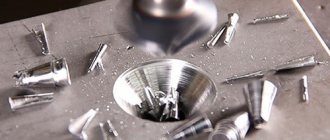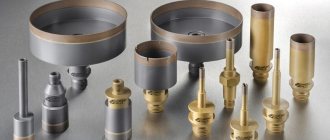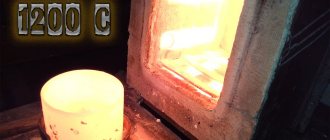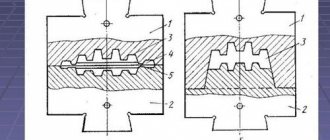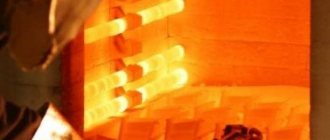Engineers and other technical specialists know very well that each of the parts that make up machines and mechanisms must have strictly defined operational properties. The most important of them include durability, wear resistance, strength, as well as some other parameters. They depend not only on the material the part is made of, but also on many other factors. One of them is surface roughness.
In order to achieve the desired roughness state, the parts undergo finishing and finishing processing . It should be noted that as a result of this technological process, the surface layer, among other things, also acquires the required physical and mechanical properties.
Grinding
In technology, grinding refers to a method of treating a metal surface that uses an abrasive material. Its cutting parts are abrasive grains.
Finishing operations
Depending on the nature of the surfaces being processed, external, internal and flat grinding are distinguished.
From the point of view of the technological stages of processing the surfaces of parts, grinding is used for both finishing and finishing, as well as for roughing.
Precision Machining
Precision machining (fine turning and boring, diamond turning, fine milling) is characterized by high cutting speeds (100–1,000 m/min), low feeds (0.01–0.15 mm/rev), small depth of cut (0.05 –0.3 mm) with high vibration resistance of the AIDS technological system. Steel workpieces with an intermittent machined surface (the presence of grooves, splines, holes), parts made of high-strength steels and cast iron are processed at cutting speeds of up to 50 m/min (when using tools with a cutting part made of superhard materials, the cutting speed can be increased to 150 m/min) . Precision processing makes it possible to obtain a surface roughness Ra of 0.02–0.63 microns, accuracy of 5–9 grades.
Lapping and finishing
In technology, these operations are finishing , and are used for mechanical processing of parts of various machines, mechanisms, and devices. Their use makes it possible to simultaneously achieve both high accuracy and the required surface roughness. The main tool for lapping and finishing is the so-called lapping. One of its main characteristics is that it is made from a much softer material than the one it is intended to process. It is most often used cast iron of such brands as SCh 20 and SCh 15, various grades of copper, other alloys, and even hard wood. To increase the efficiency of processing , special pastes or abrasive powder mixed with oil are applied to the surface of the parts before it.
The process itself, during which the surface of the lap is saturated with abrasive material, is called caricature. With the help of lapping, operations such as finishing of reamers, measuring tiles, smooth, round and threaded gauges are most often carried out.
Features of artistic metal processing
Artistic types of metal processing include casting, forging and embossing. In the middle of the 20th century, welding was added to them. Each method requires its own tools and devices. With their help, the master either creates a separate work of art, or additionally decorates a utilitarian product, giving it aesthetic content.
Artistic embossing
Embossing is the creation of a relief image on the surface of a metal sheet or the finished product itself, for example, a jug. Embossing is also done on heated metal.
Diamond smoothing
In technology, diamond burnishing is understood as a finishing method in which plastic deformation of the previously processed surface occurs, carried out using a special tool sliding over it.
This finishing treatment is used to either completely eliminate or significantly reduce the irregularities that appeared on them during the previous processing.
One of the main features of this processing method is that in its process the hardness of the surface layer of the part increases. In this case, the workpiece rotates, and after each revolution the tool moves at the feed in the axial direction by a certain amount. Due to the fact that the feed is less than the width of the groove formed by the tool, the marks that are formed from it overlap many times.
The tool smoothes the surface with its spherical working part. It itself is a metal mandrel in which a tip made of synthetic or natural diamond is fixed. The resistance of these crystals to mechanical stress is approximately the same.
Methods of mechanical processing of metals
A large group of methods for machining metals have one thing in common: each of them uses a sharp and hard tool in relation to the workpiece, to which mechanical force is applied. As a result of the interaction, a layer of metal is separated from the part, and its shape changes. The workpiece exceeds the dimensions of the final product by an amount called “allowance”
There are such types of mechanical processing of metals as:
- Turning. The workpiece is fixed in a rotating tooling, and a cutter is brought to it, removing a layer of metal until the dimensions specified by the designer are reached. Used for the production of parts shaped like a body of revolution.
- Drilling. A drill is immersed into a stationary part, which quickly rotates around its axis and is slowly fed towards the workpiece in the longitudinal direction. Used for making round holes.
- Milling. Unlike drilling, where processing is carried out only with the front end of the drill, the side surface of the cutter is also working, and in addition to the vertical direction, the rotating cutter moves both right and left and back and forth. This allows you to create parts of almost any desired shape.
- Planing. The cutter moves back and forth relative to the stationary part, each time removing a longitudinal strip of metal. In some machine models, the cutter is fixed and the part moves. Used to create longitudinal grooves.
- Grinding. The processing is carried out by rotating or performing longitudinal reciprocating movements with an abrasive material that removes thin layers from the surface of the metal. It is used for treating surfaces and preparing them for coating.
Metal grinding
Each operation requires its own special equipment. In the technological process of manufacturing a part, these operations are grouped, alternated and combined to achieve optimal productivity and reduce intra-shop costs.
Honing
In technology, honing is understood as such a procedure as the final finishing of a ground, bored or reamed hole using a hone - a special sliding head, which consists of several sliding abrasive bars.
The hone (honing head) is subject to two movements: reciprocating, along the axis, and rotational, around the axis of the hole being processed (it is relatively slow).
Honing is used to increase dimensional accuracy, reduce shape deviations, reduce surface roughness, and maintain the structure and microhardness of the surface layer of the material.
Lathe cutting tool
The efficiency that distinguishes work on a lathe is determined by a number of parameters: cutting depth and speed, the amount of longitudinal feed. In order for the processing of a part to be of high quality, it is necessary to organize the following conditions:
- high rotation speed of the workpiece fixed in a chuck or faceplate;
- stability of the tool and a sufficient degree of its impact on the part;
- the maximum possible layer of metal removed during the passage of the tool;
- high stability of all machine components and maintaining them in working condition.
The cutting speed is selected based on the characteristics of the material from which the workpiece is made, the type and quality of the cutter used. In accordance with the selected cutting speed, the rotation speed of the machine spindle equipped with a lathe chuck or faceplate is selected.
Using various types of cutters, roughing or finishing types of turning work can be performed, and the choice of tool is mainly influenced by the nature of the processing. By changing the geometric parameters of the cutting part of the tool, you can adjust the size of the removed metal layer. There are right cutters, which move from the tailstock to the headstock during the processing of the part, and left cutters, which move, respectively, in the opposite direction.
Main types of turning tools
According to the shape and location of the blade, cutters are classified as follows:
- tools with an extended working part, the width of which is less than the width of their fastening part;
- straight;
- bent.
Cutters also differ according to their purpose of use:
- scoring (processing surfaces perpendicular to the axis of rotation);
- pass-through (turning flat end surfaces);
- groove (formation of grooves);
- shaped (receiving a part with a certain profile);
- boring (boring holes in the workpiece);
- threaded (thread cutting of all types);
- cutting (cutting off a part of a given length).
The quality, accuracy and productivity of processing performed on a lathe depend not only on the correct choice of tool, but also on its geometric parameters. That is why in lessons in special educational institutions where future turning specialists are trained, a lot of attention is paid to the geometry of the cutting tool.
Turning tool angles
The main geometric parameters of any cutter are the angles between its cutting edges and the direction in which the feed is carried out. These angles of the cutting tool are called leading angles. Among them are:
- main angle – φ, measured between the main cutting edge of the tool and the feed direction;
- auxiliary – φ1, located, respectively, between the auxiliary edge and the feed direction;
- the angle at the tip of the cutter is ε.
The angle at the tip depends only on how the tool is sharpened, and the auxiliary angles can also be adjusted by installing it. As the main angle increases, the apex angle decreases, and the part of the cutting edge involved in processing decreases; accordingly, the tool life also becomes shorter. The smaller the value of this angle, the larger part of the cutting edge is involved both in processing and in removing heat from the cutting zone. Such cutters are more durable.
Practice shows that for turning not too rigid workpieces of small diameter, the optimal main angle is the value of which is in the range of 60–90 degrees. If you need to process a workpiece of large diameter, then the main angle must be selected in the range of 30–45 degrees. The strength of the tip of the cutter depends on the size of the auxiliary angle, so it is not made large (as a rule, it is selected from the range of 10–30 degrees).
Particular attention in turning lessons is paid to how to choose the right type of cutter depending on the type of processing. Thus, there are certain rules according to which the processing of surfaces of one type or another is carried out using a cutter of a certain category.
- Conventional straight and bent cutters are necessary for processing the outer surfaces of the part.
- A thrust tool will be required for end and cylindrical surfaces.
- A parting cutter is chosen for making grooves and trimming the workpiece.
- Boring cutters are used to machine previously drilled holes.
A separate category of turning tools consists of cutters, with which you can process shaped surfaces with a generatrix line length of up to 40 mm. Such cutters are divided into several main types:
- by design features: rod, round and prismatic;
- in the direction in which the product is processed: radial and tangential.
Screw-cutting lathe 1V625MP
Super finishing
In technology, superfinishing is understood as a method of finishing surfaces in which their special purity is achieved. It is carried out using oscillating abrasive bars.
Superfinishing is used mainly to process the outer surfaces of various rotating bodies. The essence of this method is the principle of “non-repeating trace”. Its essence is that the same abrasive grain does not pass along the same path twice.
When superfinishing, the main working movement is the oscillation of the head, which, together with the bars, moves along the axis. The stroke of the bars ranges from 2 to 6 millimeters; per minute they make from 200 to 1000 double strokes. In this case, the workpiece is given a rotational movement.
Thermal types of metal processing
Heat treatment of metals is used to improve their physical and mechanical properties. This includes operations such as:
- annealing;
- hardening;
- vacation;
- aging;
- normalization.
Heat treatment of steel
Heat treatment involves heating a part to a certain temperature and then cooling it according to a special program.
Annealing
The workpiece is heated to the plasticity temperature and slowly cooled directly in the furnace.
Annealing reduces the hardness of steel, but significantly increases ductility and malleability.
Annealing
Used before stamping or rolling. During annealing, internal stresses that arise during casting or machining are relieved.
Hardening
When hardening, the workpiece is heated to the plasticity temperature and kept in this state for a certain time, during which the internal structures of the metal are stabilized. Next, the product is quickly cooled in a large amount of water or oil. Hardening significantly increases the hardness of the material and reduces its impact strength, thereby increasing brittleness. Used for structural elements subject to large static and small dynamic loads.
Vacation
Carried out after hardening. The sample is heated to a temperature slightly lower than the quenching temperature and cooled slowly. This allows you to compensate for the excessive fragility that appears after hardening. Used in tool production
Aging
Artificial aging involves stimulating phase transformations in the metal mass. It is carried out with moderate heating to give the material properties that arise during natural aging over a long time.
Polishing
In technology, polishing refers to a finishing operation necessary to obtain a smooth and clean surface of a part. It is produced with special wheels on which a special abrasive powder mixed with lubricant is applied. Polishing is also carried out with soft wheels impregnated with graphite filler.
As a rule, before polishing, parts are sanded with elastic belts or wheels. This is necessary to ensure the required surface cleanliness.
Chemical processing of metals to increase the protective properties of the material
Chemical treatment of metal is the action of special substances on it in order to cause a controlled chemical reaction.
They are performed both as preparatory operations to clean the surface before welding or painting, and as finishing operations to improve the appearance of the product and protect it from corrosion.
Metal galvanizing
Protective coatings are applied using electrochemical treatment using the galvanic method.
How to treat surfaces against coronavirus: recommendations from Rospotrebnadzor
Recommendations regarding how to treat surfaces against coronavirus
Rospotrebnadzor describes the composition and minimum required concentration of active ingredients in products that can fight Covid. These include:
- Tertiary amines 0.05%
- Isopropyl alcohol 70%
- Hydrogen peroxide 3%
- Ethyl alcohol 75%
- Sodium salt of dichloroisocyanuric acid 0.06%
- Calcium (sodium) hypochlorite 0.5%
- Dichloranthine 0.005%
- Quaternary ammonium compounds 0.5%
- Chloramine B 3.0%
- Polymer derivatives of guanidine 0.2%
There is also a list
Russian manufacturers of disinfectants recommended by Rospotrebnadzor.
Whether a particular disinfectant is suitable for eliminating coronavirus pathogens can always be found out from its instructions. The full composition of the product is always indicated there, which can be checked against the list given above, the method of use and the necessary precautions. Instructions can be found on the packaging of the product itself, or online. Now you can easily find official instructions from Rospotrebnadzor for most disinfectants online.
Technology for preparing surfaces and products for painting
Various chemical methods are used. preparation:
- spraying - with a low-pressure jet, usually a chemical surface preparation unit is used;
- immersion - through a series of sequentially located baths, also an AHP, but different;
- steam jet - manually, using a spray barrel (a high-temperature steam-water mixture under high pressure), degreasing is carried out simultaneously with amorphous phosphating; used on large-sized products.
Standard technology for surface preparation for painting
In cases where special quality of painting is not required, special equipment and standard technology for preparing the surface for painting are used.
There are 4 main stages:
- Cleaning. Includes removal of various types of contamination - brushes, scrapers. Old paint, scale, and rust are removed by heat treatment - first they are heated with a burner flame and then the sludge is removed with brushes and scrapers. It is better to clean large volumes with sandblasters or electric brushes.
- Degreasing. At this stage, severely ingrained rust is removed by wiping the affected areas with a solution of acetic acid (10 percent) or a special detergent for degreasing. Before this, the surface is wiped with a solvent, organic matter and oil stains are removed. Don’t forget: rinse off the acid with water and wait until it dries.
- Apply primer to the entire surface before painting. Additional protection of the cleaned metal from rapidly developing corrosion and leveling of the surface. The final coating acquires the necessary adhesion.
- Grinding. Use fine sandpaper to walk over the dried primer, removing small irregularities and specks. Wipe with a clean cloth.
Sandblasting
Experts from the Radar Powder Coating Center will help you select the necessary equipment.
Methods using surface treatment technologies
Technologies for surface treatment of materials currently represent one of the most developing areas of materials science. Methods associated with the creation of modified layers on the surface of materials have been sufficiently studied, tested and widely used in practice. Many of these methods or their improved variants can be considered as nanotechnology methods, since they allow the creation of nanosized and/or nanostructured layers on the surface of materials, composite materials with nanocomponents, and in some cases, nanomaterials in the form of nano- and micro-products. They are all united by a common scheme: gases, vapors or mixtures thereof are fed into the deposition chamber, where there is a substrate on which it is necessary to obtain a coating in the form of a film with the required properties. On the way to the substrate, gases are activated in various ways to produce active particles, molecules or radicals, from which the desired coating is formed. Activation can occur using electrical discharges of various types, catalytic action on gas molecules, and raising the temperature to the level necessary to initiate the required reaction in the gas phase or on the surface of the substrate.
Chemical vapor deposition.
One of the common methods for forming hard coatings on the surface of substrates or workpieces is chemical vapor deposition (CVD). The essence of this method is that the final product is formed on a substrate or any part as a result of the interaction of gaseous precursor substances or pyrolysis of vapor of a precursor substance. In this case, precursor substances under normal conditions can be not only gases, but also solids or liquids; in this case, they are sublimated or evaporated in a special zone of the reactor, and then transported to the target substrate using a carrier gas, which can be both inert and participate in synthesis. If the reaction produces gaseous by-products, they are removed from the reactor by flow of carrier gas or by vacuum pumping.
Carbonyls, halogens, and organometallic compounds are most often used as precursor substances. For example, metal halides are reduced by hydrogen to metal to form a halogen-hydrogen compound, and carbonyls are decomposed into metal and carbon monoxide by pyrolysis. Examples of reactions:
2MeG + H2 → 2Me + 2HG reduction reaction with hydrogen (G – halogen);
Mex(CO)y → xMe + yCO pyrolysis of carbonyls;
MeCl + CH4 → MeC + HCl interaction with intermediate components.
The most optimal course of chemical reactions occurs most often at temperatures from 500 to 1500 ºС. Therefore, the parts being processed are heated to these temperatures, which ensures the localization of the chemical reaction at the surface of the parts, as well as the optimal course of the process, obtaining coatings with specified properties and good adhesion. The formation of coatings occurs by successive layering of deposited material. The method ensures the production of coatings with a thickness of 1 - 20 microns at a speed of 0.01 - 0.1 microns/min.
CVD can be used to coat the internal surfaces of tubes and holes. It can be used to produce a wide variety of materials: silicon, carbon fiber, carbon nanotubes, silicon oxide, tungsten, silicon carbide, silicon nitride, titanium nitride, various dielectrics, as well as synthetic diamonds. The CVD process is often used in the semiconductor industry to create thin epitaxial layers.
The main disadvantage of the CVD method is the need to heat the parts to high temperatures. On the one hand, this has a negative effect on the mechanical properties and structure of the substrate, and on the other hand, it causes additional problems if it is necessary to obtain a nanostructured state of the coating itself.
The chemical vapor deposition process can be carried out using glow discharge plasma. There are two varieties of this method. In the first type - reactive sputtering - the target material in the form of ions interacts in the glow discharge plasma with ions of the active gaseous medium. A coating in the form of a compound is deposited on the surface of the workpieces. A typical example is the production of a titanium nitride coating when titanium and nitrogen ions interact in a glow discharge plasma. The second type is often called ion-activated chemical vapor deposition. In this case, chemical reactions similar to the CVD method are used, but due to their activation by the glow discharge plasma, the temperatures necessary for their occurrence are reduced to 200 - 300 ºС. However, in this case it is practically impossible to obtain coatings with a very high purity of the chemical composition, since due to insufficient desorption at a low temperature of the substrate, impurities of reaction gases can penetrate into the forming coating.
There is a wide variety of methods based on physical processes occurring on the surface of the substrate or workpiece. Among them, one can distinguish a group of physical vapor deposition methods: PVD (Physical Vapor Deposition). This group of methods is united by a common coating scheme and the use of vacuum. In them, the coating material is first transferred from the condensed state to the vapor state, then it is transported to the substrate or product to be coated. There, the coating material is deposited from the vapor phase and the coating is formed.
The classification of a method within a group is determined by the combination of evaporation, transport and deposition methods used. This group includes thermal vacuum evaporation, ion-plasma sputtering, ion implantation, and laser radiation treatment.
Thermal vacuum evaporation
carried out in vacuum at a pressure of the order of 10-3 – 10-5 Pa. At this pressure, the free path of atoms or molecules is on the order of several meters. The vapor phase of the sprayed substance obtained as a result of heating is freely deposited onto the substrate, which has a temperature much lower than the temperature of the vapor phase. Depending on the heating source, the following variants of the method have become widespread: electrothermal heating (directly passing an electric current through a sample in the form of a spiral or heating the substance in a crucible), heating using an RF inductor, evaporation due to an electric arc discharge, heating with an electron or laser beam. Most of these methods are designed for the evaporation of metallic materials. Heating in a crucible and the use of laser radiation make it possible to evaporate a wide range of materials. Crucible heating can be used to evaporate materials with a relatively low evaporation temperature. In this case, it is necessary to take into account the temperature and chemical resistance of the crucible material, which is used as graphite, aluminum oxide, boron nitride, molybdenum, etc. An important condition for choosing a material for the crucible is the absence of chemical interaction between it and the evaporated substance at high temperatures.
To create coatings from alloys and chemical compounds, it is necessary to evaporate each component from a separate source. This is due to the fact that when a complex substance evaporates, its components can have very different vapor pressure values. In this case, the composition of the vapor phase and, as a consequence, the composition of the coating will differ from the composition of the evaporated substance. In addition, the evaporation of compounds is often accompanied by processes of dissociation and/or association, which also interferes with obtaining the desired coating composition.
To provide better evaporation conditions and overcome a number of other disadvantages of evaporation from crucibles, electron beam evaporation is used. In this case, the electrically conductive evaporated material is placed in a water-cooled crucible and heated by an electron beam. The focusing spot of the electron beam on the surface of the evaporated material can reach 1 mm, so the melting zone will be significantly smaller than the entire volume of the material and, therefore, will not be in contact with the crucible. The disadvantage of electron beam evaporation, as well as evaporation from crucibles, is the difficulty of evaporating a material consisting of components with different vapor pressures at the same temperature, which complicates the production of coatings from metal alloys of a given composition. The use of laser light (pulsed or continuous wave) avoids most temperature and chemical limitations and eliminates the need for crucibles. Almost instantaneous evaporation of the substance makes it possible to maintain the ratio of chemical components in the deposited film the same as that of the evaporated material.
The advantages of the thermal vacuum evaporation method include the relative simplicity of equipment and process control, while the disadvantages are low adhesion of the coating due to the low energy of atoms or molecules deposited on the substrate and high sensitivity to the presence of foreign films and contaminants on the surface of the substrate. The impact of these shortcomings can be somewhat reduced through the use of special surface preparation methods (ultrasonic, chemical or electrochemical cleaning, ion etching).
Ion-plasma sputtering
based on the sputtering of targets from the desired substance by accelerated ions formed in a gas-discharge plasma. The simplest is cathode sputtering. In this case, the process is carried out in a special gas-discharge chamber at a working gas (argon) pressure of the order of 1 – 10 Pa. A constant voltage of the order of 1–5 kV is applied between the target cathode made of the sputtered material and the anode on which the substrate is fixed. This creates conditions for the occurrence of an independent gas discharge. The inert gas ions formed in this process bombard the cathode target and knock out atoms from its surface, which are deposited on a nearby substrate. The deposition rate with this method is relatively low - at the level of 0.1 µm/min.
The three-electrode sputtering scheme has wider capabilities. In it, the discharge current and voltage on the target are regulated independently of each other. Unlike the two-electron cathode sputtering scheme, in which electrons are emitted from the cathode through secondary electron emission, the three-electrode scheme uses thermionic emission. This makes it possible to significantly facilitate the formation of plasma and carry out the process at a higher vacuum (at the level of 0.1 Pa), which, in turn, ensures higher purity of the sprayed material. The deposition rate is about 1 µm/min. The disadvantage of this option is the noticeable heating of the substrate, reaching in some cases 300 – 500ºС.
Further development of three-electrode sputtering systems led to the creation of autonomous ion sources. The ion source is a gas-discharge chamber with a thermionic cathode into which working gas is supplied under pressure of ~0.5 Pa, which ensures a high concentration of ions. The gas-discharge chamber is separated from the deposition chamber by calibrated holes, which ensures a pressure difference, as a result of which the pressure in the deposition chamber, where the target and substrate are located, is on the order of 0.015 Pa. Some of the ions enter through the holes into the deposition chamber, accelerate and sputter the target. This design makes it possible to increase the target sputtering rate and improve the purity of films deposited on the substrate.
A type of cathode sputtering is high-frequency sputtering. The general circuit is generally similar to the two-electrode circuit, only instead of a constant voltage between the anode and the target cathode, a high-frequency voltage with an amplitude of 0.3 - 2 kV and a frequency of over 10 MHz is applied. This method makes it possible to sputter targets made of both electrically conductive and dielectric materials, and the sputtering efficiency is higher than that of a two-electrode circuit using a constant voltage.
In the magnetron sputtering method, mutually perpendicular electric and magnetic fields are used to form a gas-discharge plasma. This makes it possible to significantly reduce the working gas pressure in the chamber and localize the plasma near the target, as a result of which the target sputtering rate increases significantly. The method makes it possible to ensure a deposition rate of up to 1–2 μm/min and reduce substrate heating to 100–250 ºС.
Ion implantation
is the process of introduction (implantation) of high-energy ions into the surface layer of the target material. The process is carried out in a vacuum at a pressure of the order of 10-4 – 10-3 Pa using ion-beam accelerators (implanters). When ions fall on the modified material, they penetrate into it to a depth of 5–500 nm, depending on their energy. Conventionally, low-energy ion implantation with ion energy of 2–10 keV and high-energy implantation with ion energy of up to 400 keV are distinguished. Depending on the design of the implanter, the diameter of the ion beam spot on the surface of the material being processed can range from 10 to 200 mm, and the average current in the ion beam can range from 1 to 20 mA. The dose of ion irradiation is usually 1014 – 1018 cm-2.
During the interaction of ions bombarding a target with surface atoms of the modified material, a whole complex of complex processes occurs. In addition to the actual implantation of ions into the surface layer of the material, processes such as sputtering of the surface, the development of cascades of collisions with the formation of radiation defects, cascade (ballistic) mixing of material atoms in the surface layer, radiation-stimulated diffusion, the formation of metastable phases, radiation-stimulated segregation occur (redistribution of material atoms in the surface layer), etc. The relationship between these processes depends on the type of implanted ions, the modified material and the technological processing mode.
The main advantages of ion implantation as a method for creating modified surface nanolayers are: the ability to obtain almost any combination of materials in the surface nanolayer, independence from the solubility limits of components in the solid phase (i.e., it is possible to obtain alloys that are impossible under normal conditions due to thermodynamic limitations ), low temperatures of the modified material and the absence of noticeable changes in the dimensions, structure and properties of the base material, absence of adhesion problems, controllability of the processing depth, good reproducibility and stability of the process, high purity of the process in a vacuum, the ability to create complex surface nanostructures, the possibility of simultaneous or sequential implantation of ions of various materials.
The disadvantages of the method include: the shallow depth of penetration of ions into the material (especially at low energies), the occurrence of surface sputtering processes, the high cost and complexity of equipment, insufficient knowledge and the difficulty of controlling the entire complex of processes occurring during ion implantation.
Laser group of methods
based on surface treatment with laser radiation. With these methods, the nanostructural state is achieved in thin surface layers of metal materials or products obtained using traditional technologies by interacting the substance with high-density laser radiation. Pulsed laser radiation with an energy density of 103 – 1010 W/cm2 and a pulse time of 10-2 – 10-9 s is used. In a number of cases, continuous radiation from CO2 lasers with an energy density of 105 - 107 W/cm2 is used with beam scanning speeds that ensure the interaction time of the material with the radiation is 10-3 - 10-8 s. Under the influence of laser irradiation, a surface layer of material with a thickness of 0.1 - 100 microns melts very quickly and then solidifies with cooling rates of 104 - 108 K/s. In this case, the bulk of the metal material, due to the short duration of the thermal effect, does not heat up and provides high heat removal rates. High cooling rates make it possible to achieve a nanocrystalline or even amorphous structure. In this case, the nanocrystalline state is obtained by carrying out additional controlled crystallization during heat treatment.
Laser alloying or laser implantation is associated with the additional introduction of alloying substances into the melted surface layer. Such introduction can be carried out both by preliminary application of a thin film of the alloying substance on the surface of the material being processed, and by injection of powder particles (including nanoparticles) in a gas stream into the zone affected by laser radiation. In this case, alloying can pursue two main goals: firstly, the creation on the surface of a modified layer with a chemical composition and properties different from the base metal; secondly, facilitating the formation of a nanostructured or amorphous state during solidification of the molten surface layer.
